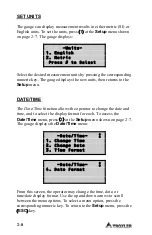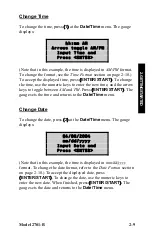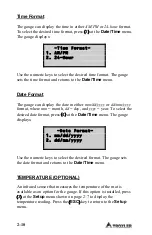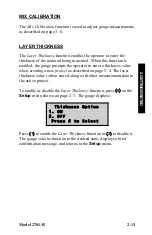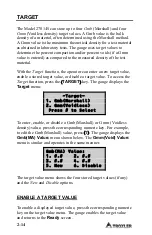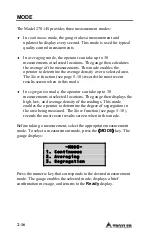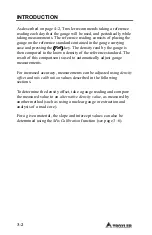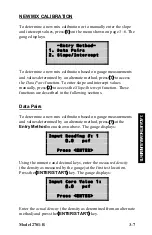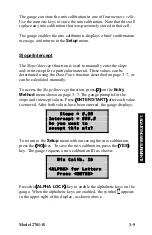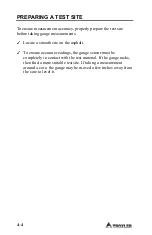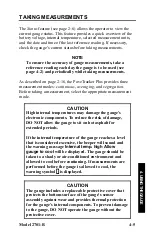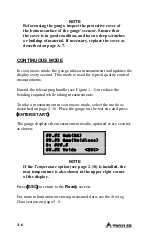
Model 2701-B
3–3
3. ADJUSTI
NG
M
EASUREMEN
TS
OFFSET
To improve the accuracy of the PaveTracker Plus for a specific
material of known density, the unit can be calibrated using a density
offset. A density offset is determined by taking in-place
measurements using the PaveTracker Plus, then comparing the
measured density
to an
alternative density
, as determined using a
nuclear gauge reading or road core extraction and analysis.
DETERMINING THE DENSITY OFFSET
To determine the density offset for a given material:
1.
Take a reference reading using the PaveTracker Plus as
described on page 4–2.
NOTE
Before using the PaveTracker Plus, inspect the
protective cover of the bottom surface of the gauge’s
sensor. Ensure that the cover is in good condition, and
has no deep scratches or buildup of material. If
necessary, replace the cover as described on page A–7.
2.
Measure the in-place density of the material using the
PaveTracker Plus to find the
measured density
. Mark the test
site so that nuclear gauge readings or core extraction can be
conducted in the same location. If the core has already been
removed, take the measurement as close as possible to the core
location.
NOTE
When taking PaveTracker Plus measurement on a core
site, be sure to take measurements before the core is cut,
as the water used during the core cutting process may
affect PaveTracker Plus measurements.
3.
Determine the
alternative
density
of the material using a nuclear
gauge reading or road core extraction and analysis. Be sure to
conduct the gauge measurements or core extraction in the same
location as the PaveTracker Plus reading.
Summary of Contents for 2701 -B
Page 8: ...viii NOTES ...
Page 12: ...xii NOTES ...
Page 20: ...1 8 NOTES ...
Page 84: ...Appendix B 6 NOTES ...
Page 94: ...Index 6 NOTES ...




